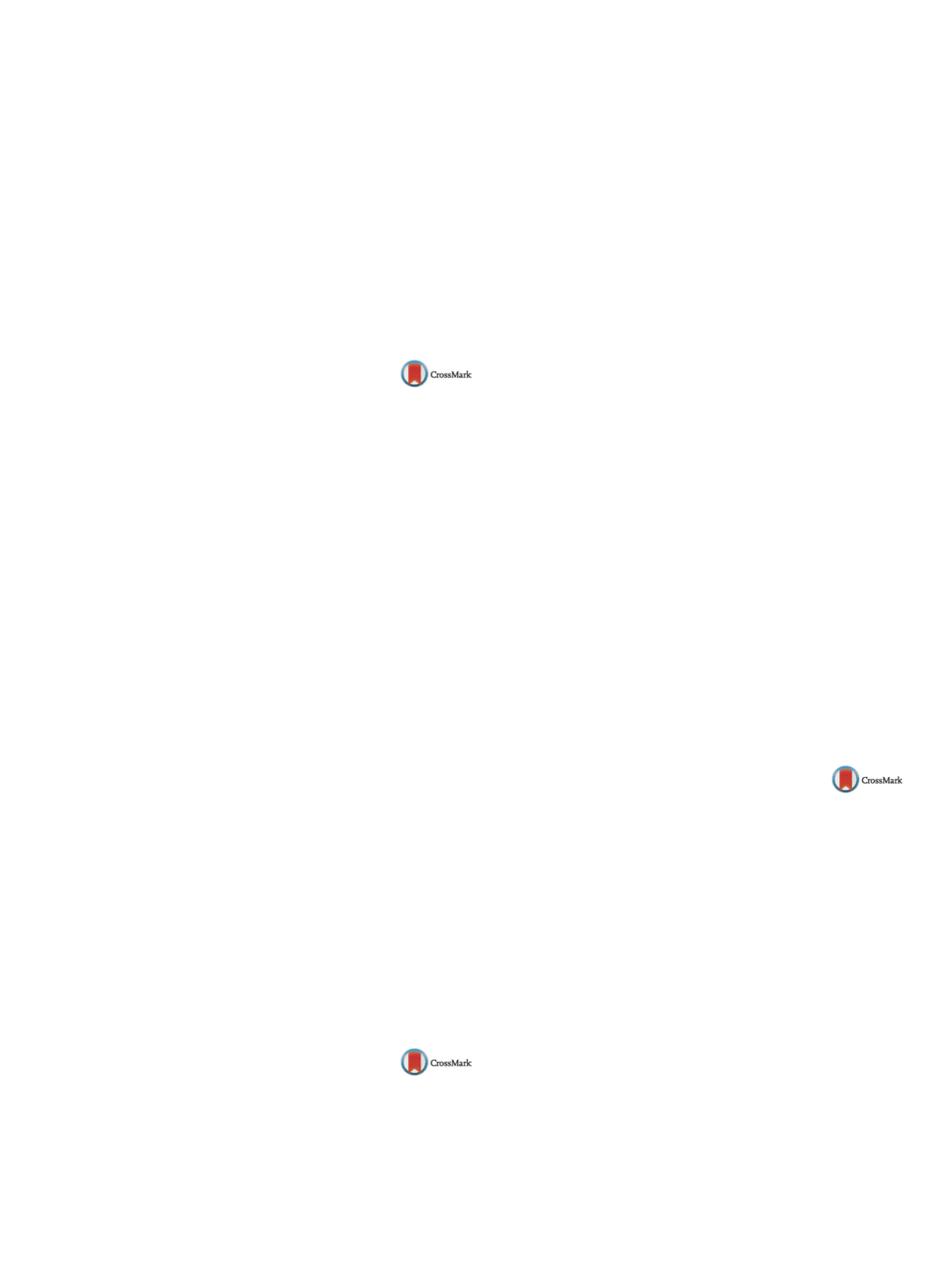

25th European Congress of Psychiatry / European Psychiatry 41S (2017) S772–S846
S833
“strange” factor was higher among the future psychosis patients. A
“high-functioning” factor was identified as a protective factor.
Discussion
This study used narrative analysis of interviewsumm-
aries of adolescents who underwent pre-induction assessments.
The current study replicated previously published findings that
were obtained as a result of retrospective investigations and com-
paring numeric scores, using unique pre-morbid data and in-depth
qualitative analyses, combined with a quantitative one. The main
strengths of the current study are the fact that the subjects were
interviewed before the onset of psychosis, as well as the fact that
the analyses of the data were performed blinded to outcome.
Disclosure of interest
The authors have not supplied their decla-
ration of competing interest.
http://dx.doi.org/10.1016/j.eurpsy.2017.01.1635EV1306
A scale of autonomy for patients with
schizophrenia – new instrument for
clinical assessment of the level of
independency: Description and
validation
G. Rupchev
∗
, M. Morozova
Federal State Budgetary Scientific Institution “Mental Health
Research Center”, Laboratory of Psychopharmacology, Moscow,
Russia
∗
Corresponding author.
Introduction
Today the scales for measurement of functional
status and life satisfaction (GAF, PSP, EQ-5D, SQLS) gain more
importance in assessing schizophrenic patients. Autonomy of liv-
ing is to the great extent the basis of patient well-being. Each of
these scales has the criteria, testing ability for independent life, but
none of it tests autonomy as a separate object.
Objective
Development of a new scale.
Aims
Description and validation of a scale for evaluation of
autonomy of living in schizophrenic patients.
Methods
Forty patients diagnosed with schizophrenia according
to ICD
−
10 (F 20.
хх
), 13males and 27 females, aged 49.8
±
9, disease
duration is 22
±
8.6 years. New scale and PANSS, CGI-S, NSA, BACS,
GAF, PSP was administered.
Results
The scale comprises five points (activity, intentional
behavior, range of social interaction, specificity of interaction with
the doctor (medical conventionality) and autonomy), and total
score. The internal consistency of the scale was high – cronbach’s
alpha 0.83. The construct validity with GAF and PSP was moderate
(R varied from 0.36 to 0.55). The total score of the new scale cor-
related with the PANSS negative subscale score (
R
=
−
0.51), with
CGI-S score (
R
=
−
0.57), and with the BACS total score (
R
=
−
0.57).
Conclusion
The scale of autonomy corresponds to the major
psycho-diagnostic requirements: internal consistency, construct
and discriminative validities. It can be considered a new instrument
for assessing the integrative target of treatment and rehabilitation
of patients with schizophrenia.
Disclosure of interest
The authors have not supplied their decla-
ration of competing interest.
http://dx.doi.org/10.1016/j.eurpsy.2017.01.1636EV1307
Cardiac adipose tissue,
intra-abdominal adipose tissue, and
risk for cardio-metabolic diseases in
patients with schizophrenia
J. Ruppert
1 ,∗
, D. Hartung
2, M. Gutberlet
2, M. Westhoff-Bleck
3,
K. Kahl
11
Hannover Medical School, Psychiatry, Social Psychiatry and
Psychotherapy, Hannover, Germany
2
Hannover Medical School, Institute for Clinical and Interventional
Radiology, Hannover, Germany
3
Hannover Medical School, Department of Cardiology and Angiology,
Hannover, Germany
∗
Corresponding author.
Introduction
Schizophrenia is associated with increased physical
morbidity and mortality. In particular, cardio-metabolic diseases
are more frequent. Several underlying reasons have been dis-
cussed, including adverse lifestyle behaviors, or adverse effects of
neuroleptic treatment. However, little is known about changes of
cardiac and intra-abdominal adipose tissue, both are risk factors for
the development of cardio-metabolic diseases.
Objectives/aims
To compare, cardiac and intra-abdominal adi-
pose tissue between patients with schizophrenia and healthy
controls.
Methods
Ten physically healthy patients with schizophrenia
according to DSM-V were included, and compared to healthy
control subjects. Cardiac and intra-abdominal adipose tissue was
quantified using magnetic resonance tomography. Further fac-
tors assessed comprise the metabolic syndrome, physical activity,
smoking behavior, and scores for the assessment of cardio-
metabolic diseases (FINDRISK score and modified ESC score).
Results
Cardiac adipose tissue and intra-abdominal adipose tis-
sue was increased in patients with schizophrenia. Further findings
were higher diastolic blood pressure, more smoking, less physical
activity, and an increase for diabetes and cardiovascular disease
risk according to the modified ESC and FINDRISK score.
Conclusions
The newfinding in our study is an increase of cardiac
adipose tissue, a risk factor for the development of cardiovascu-
lar disorders, in physically healthy patients with schizophrenia.
Furthermore, the risk for the development of type-2 diabetes mel-
litus is increased, indicated by higher amount of intra-abdominal
adipose tissue, and the results of the FINDRISK score. We con-
clude that lifestyle alterations, particularly exercise training that
has been shown to reduce cardiac and intra-abdominal adipose
tissue, should be recommended in patients with schizophrenia.
Disclosure of interest
The authors have not supplied their decla-
ration of competing interest.
http://dx.doi.org/10.1016/j.eurpsy.2017.01.1637EV1308
Not the same old madness: Evaluating
the clinical profile of the
“schizophrenia spectrum” disorders
A. Russo
1 ,∗
, N. Verdolini
1 , 2, G. Menculini
1, P. Moretti
1,
R. Quartesan
1, A. Tortorella
11
Division of Psychiatry, Clinical Psychology and Rehabilitation,
Department of Medicine, Santa Maria Della Misericordia Hospital,
University of Perugia, Perugia, Italy
2
Bipolar Disorders Unit, Institute of Neuroscience, IDIBAPS
CIBERSAM, Hospital Clínic, Barcelona, Spain
∗
Corresponding author.
Introduction
The “schizophrenia spectrum” concept allowed
better identifying the psychopathology underpinning disorders
including schizophrenia, schizoaffective disorder (SZA) and cluster
A personality disorders (PD).
Aims
To compare the clinical portrait of the schizophrenia spec-
trum disorders, focusing on the impact of the affective dimension.
Methods
Inpatients at the acute psychiatric ward of Perugia
(Umbria-Italy) were evaluated with the structured clinical inter-
view for DSM-IV Axis I and Axis II disorders and diagnosed with
a “schizophrenia spectrum” disorder according to DSM-IV-TR. The
clinical evaluation was conducted using the positive and negative
syndrome scale (PANSS). Pearson correlations of the different sub-
scales in the three groups and between the negative scales with the
affective symptom “depression” were conducted.


















